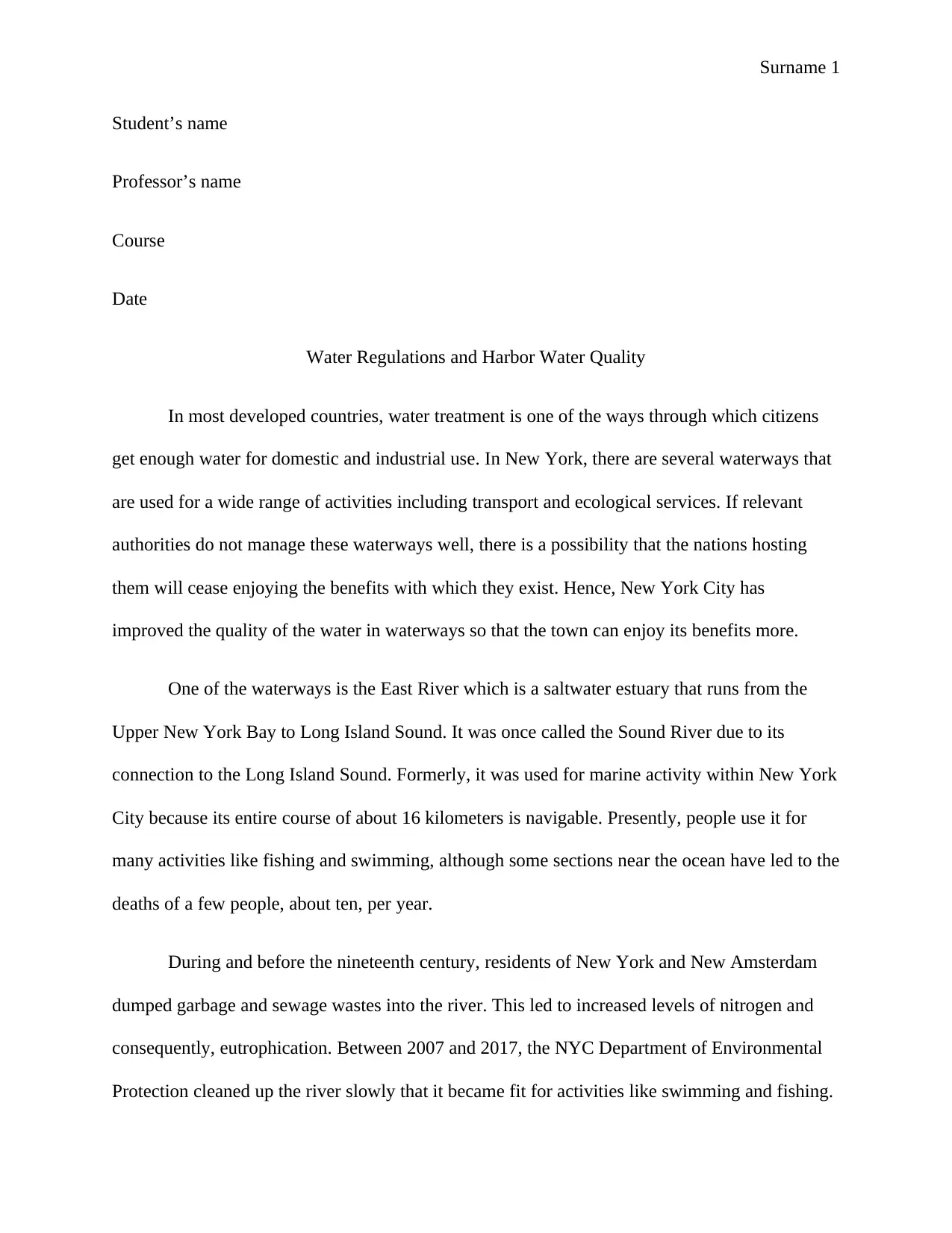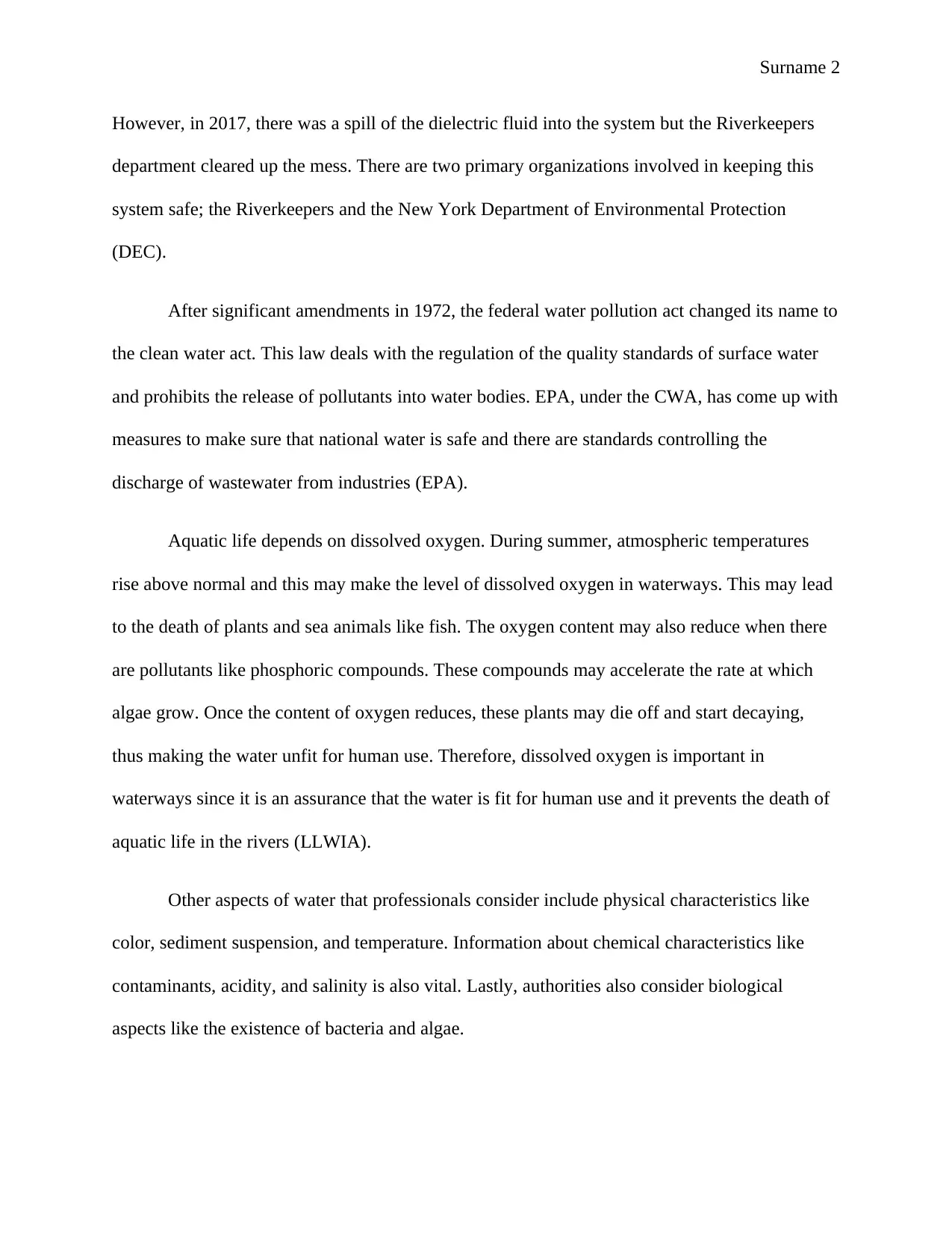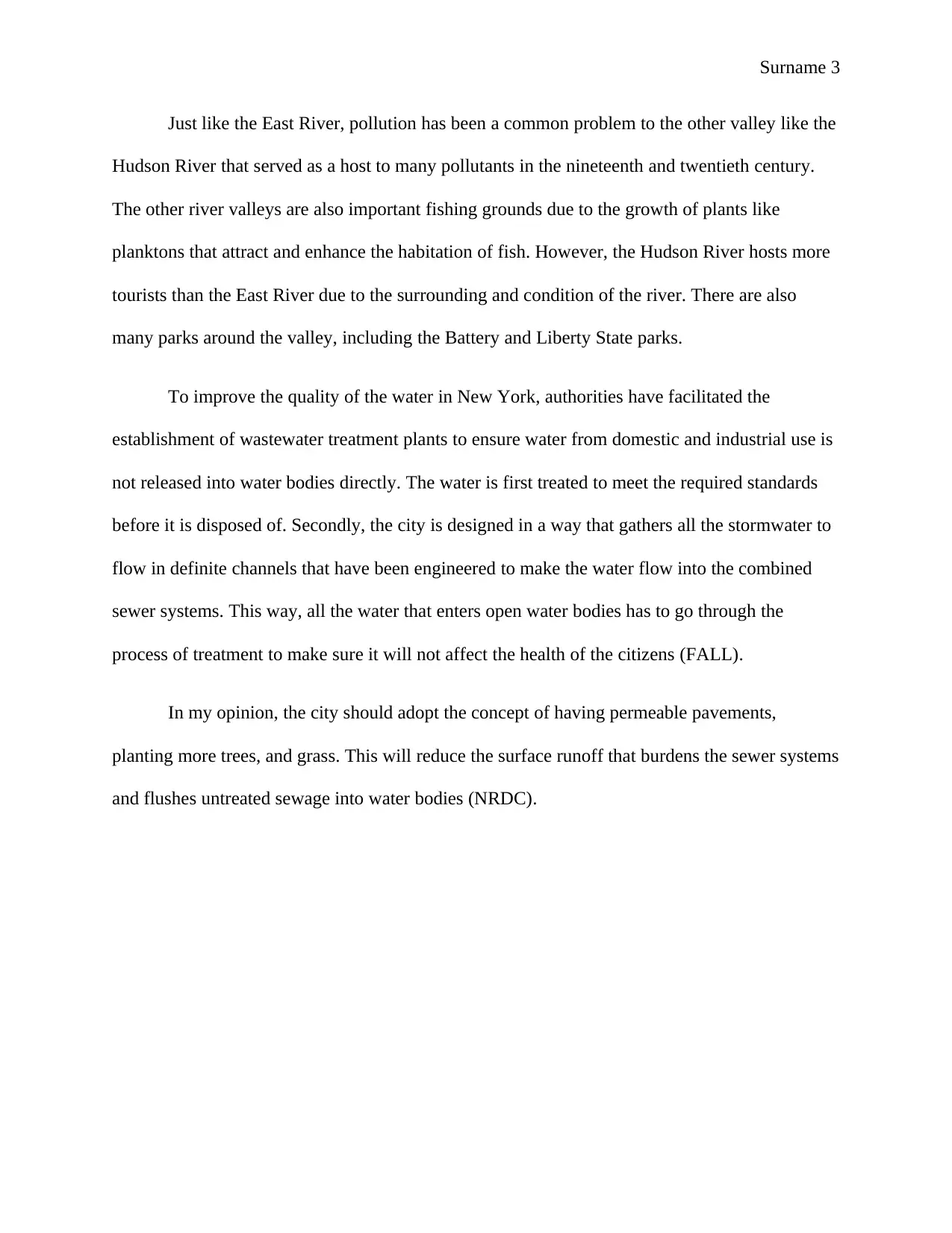CMCE 2454 - Applied Hydraulics: Water Regulations and Quality
VerifiedAdded on 2022/11/26
|4
|940
|91
Homework Assignment
AI Summary
This homework assignment examines water quality concerns in New York City's harbor, focusing on the importance of regulations and monitoring to protect local waterways. The solution delves into the history of water quality issues, highlighting the impact of pollution from sewage and industrial waste on waterways like the East River and Hudson River. It discusses the role of organizations like the NYC Department of Environmental Protection (DEP) and the Clean Water Act in improving water quality through wastewater treatment plants, stormwater management, and pollution control. The assignment also explores the significance of dissolved oxygen and other physical, chemical, and biological factors in maintaining healthy aquatic ecosystems. The solution concludes with recommendations for further improvements, such as implementing permeable pavements and planting more trees to reduce stormwater runoff and improve the efficiency of sewer systems.
1 out of 4





![[object Object]](/_next/static/media/star-bottom.7253800d.svg)